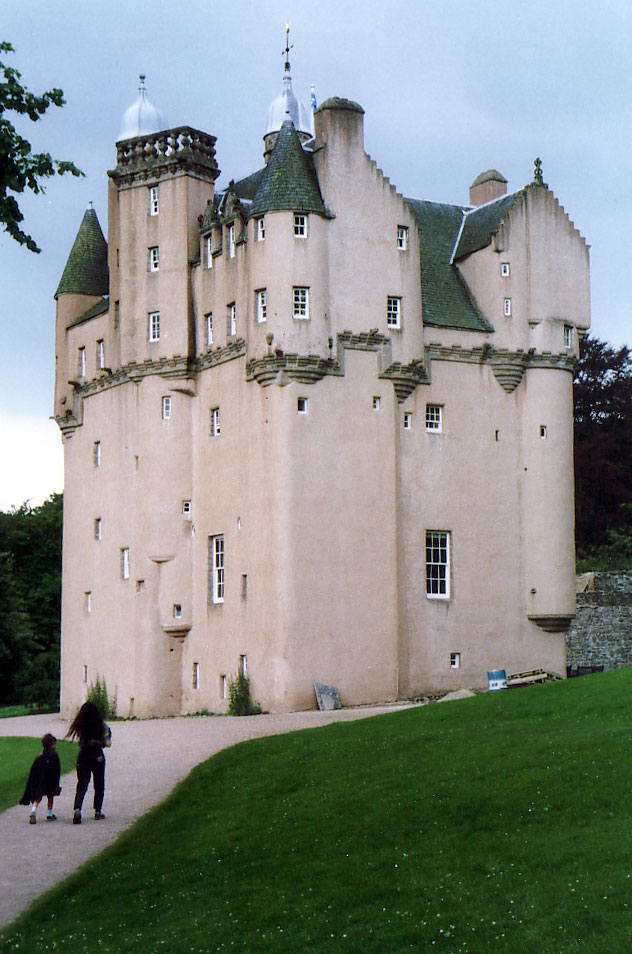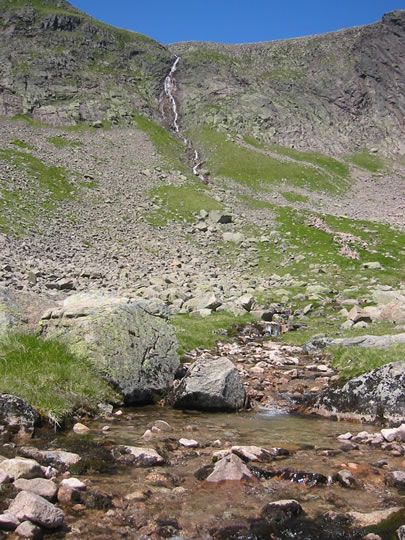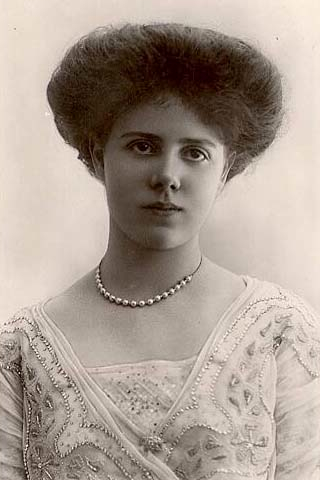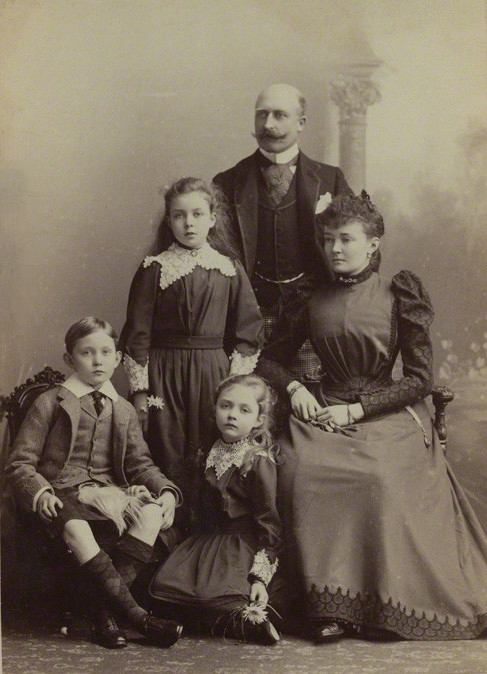|
St Ninian's Chapel, Braemar
St Ninian's Chapel in Braemar, Aberdeenshire, Scotland, is a Grade B listed Anglican chapel located in the grounds of the Mar Lodge Estate. Built from 1895 to 1898 for use as a private chapel by the family of Alexander Duff, 1st Duke of Fife, owners of Mar Lodge, it has been the property of the Diocese of Aberdeen and Orkney in the Scottish Episcopal Church since 1899. St Ninian's Chapel is the most westerly church in the Diocese.Braemar - Chapel of St Ninian accessed 9 December 2015 History St Ninian's Chapel has always been closely associated with and its various owners.Foundation and ownership [...More Info...] [...Related Items...] OR: [Wikipedia] [Google] [Baidu] |
National Trust For Scotland
The National Trust for Scotland for Places of Historic Interest or Natural Beauty, commonly known as the National Trust for Scotland ( gd, Urras Nàiseanta na h-Alba), is a Scottish conservation organisation. It is the largest membership organisation in Scotland and describes itself as "the conservation charity that protects and promotes Scotland's natural and cultural heritage for present and future generations to enjoy". The Trust owns and manages around 130 properties and of land, including castles, ancient small dwellings, historic sites, gardens, coastline, mountains and countryside. It is similar in function to the National Trust, which covers England, Wales, and Northern Ireland, and to other national trusts worldwide. History The Trust was established in 1931 following discussions held in the smoking room of Pollok House (now a Trust property). The Trust was incorporated on 1 May 1931, with John Stewart-Murray, 8th Duke of Atholl being elected as its first president, ... [...More Info...] [...Related Items...] OR: [Wikipedia] [Google] [Baidu] |
Mar Estate
Mar, mar or MAR may refer to: Culture * Mar or Mor, an honorific in Syriac * Earl of Mar, an earldom in Scotland * MAA (singer) (born 1986), Japanese * Marathi language, by ISO 639-2 language code * March, as an abbreviation for the third month of the year in the Gregorian calendar * Biblical abbreviation for the Gospel of Mark Places * Mar, Isfahan, a village in Iran * Mar, Markazi, a village in Iran * Mar, Russia, in the Sakha Republic * Marr, a region of Scotland * Mesoamerican region, an economic region * Mid-Atlantic Ridge, a ridge on the floor of the Atlantic Ocean People * Mar (surname), a Chinese and Scottish surname (including a list of people with the surname) * Mar Abhai, a saint of the Syriac Orthodox Church * Mar Amongo (1936–2005), a Filipino illustrator *Mar Cambrollé (born 1957), Spanish trans rights activist * Mar Roxas (born 1957), Filipino politician Other uses * ''MÄR'' (''Marchen Awakens Romance''), a 2003 Japanese manga series * ''Mar'' (boat), ... [...More Info...] [...Related Items...] OR: [Wikipedia] [Google] [Baidu] |
River Dee, Aberdeenshire
The River Dee ( gd, Uisge Dhè) is a river in Aberdeenshire, Scotland. It rises in the Cairngorms and flows through southern Aberdeenshire to reach the North Sea at Aberdeen. The area it passes through is known as Deeside, or Royal Deeside in the region between Braemar and Banchory because Queen Victoria came for a visit there in 1848 and greatly enjoyed herself. She and her husband, Prince Albert, built Balmoral Castle there which replaced an older castle. Deeside is a popular area for tourists, due to the combination of scenic beauty and historic and royal associations. It is part of the Cairngorms National Park, and the Deeside and Lochnagar National Scenic Area. The Dee is popular with anglers and is one of the most famous salmon fishing rivers in the world. The New Statistical Account of Scotland attributed the name Dee as having been used as early as the second century AD in the work of the Alexandrian geographer Claudius Ptolemy, as ''Δηοῦα'' (=Deva), meaning ... [...More Info...] [...Related Items...] OR: [Wikipedia] [Google] [Baidu] |
Charles Carnegie, 11th Earl Of Southesk
Charles Alexander Bannerman Carnegie, 11th Earl of Southesk (23 September 1893 – 16 February 1992), styled The Honourable Charles Carnegie before 1905 and Lord Carnegie between 1905 and 1941, was the husband of Princess Maud, a granddaughter of King Edward VII. Early life and marriage Charles Alexander Carnegie was born on 23 September 1893 in Edinburgh, Scotland. His father was the 10th Earl of Southesk, the son of the 9th Earl of Southesk and Lady Catherine Hamilton Noel. His mother was Ethel Mary Elizabeth Bannerman. When his father succeeded to the earldom in 1905 he was styled ''Lord Carnegie'' as the eldest son of the Earl of Southesk. Lord Carnegie was educated at Ludgrove School and Eton College. He later joined the British Army and received a commission in the Scots Guard. In 1917, he served as an aide-de-camp to the Viceroy of India. On 12 November 1923 he married Princess Maud at the Royal Military Chapel, Wellington Barracks, London. Princess Maud was the youn ... [...More Info...] [...Related Items...] OR: [Wikipedia] [Google] [Baidu] |
Princess Maud, Countess Of Southesk
Maud Carnegie, Countess of Southesk (née Lady Maud Duff; 3 April 1893 – 14 December 1945), titled Princess Maud from 1905 to 1923, was a granddaughter of Edward VII. Maud and her elder sister, Alexandra, had the distinction of being the only female-line descendants of a British sovereign officially granted both the title of ''Princess'' and the style of ''Highness''. Although Princess Maud did not otherwise carry out royal engagements, because of her position in the Commonwealth's order of succession she served as a Counsellor of State between 1942 and 1945. Early life Maud was born at East Sheen Lodge, Richmond-upon-Thames, Surrey, on 3 April 1893. Her father was Alexander Duff, 1st Duke of Fife. He was raised from Earl of Fife, Earl to Duke of Fife following marriage to Maud's mother, Louise, Princess Royal and Duchess of Fife, Princess Louise of Wales, the third child and eldest daughter of the future Edward VII of the United Kingdom, King Edward VII and Queen Alexandra. ... [...More Info...] [...Related Items...] OR: [Wikipedia] [Google] [Baidu] |
James Carnegie, 3rd Duke Of Fife
James is a common English language surname and given name: *James (name), the typically masculine first name James * James (surname), various people with the last name James James or James City may also refer to: People * King James (other), various kings named James * Saint James (other) * James (musician) * James, brother of Jesus Places Canada * James Bay, a large body of water * James, Ontario United Kingdom * James College, a college of the University of York United States * James, Georgia, an unincorporated community * James, Iowa, an unincorporated community * James City, North Carolina * James City County, Virginia ** James City (Virginia Company) ** James City Shire * James City, Pennsylvania * St. James City, Florida Arts, entertainment, and media * ''James'' (2005 film), a Bollywood film * ''James'' (2008 film), an Irish short film * ''James'' (2022 film), an Indian Kannada-language film * James the Red Engine, a character in ''Thomas the Tank En ... [...More Info...] [...Related Items...] OR: [Wikipedia] [Google] [Baidu] |
Duke Of Fife
Duke of Fife is a title in the Peerage of the United Kingdom that has been created twice, in both cases for Alexander Duff, 1st Duke of Fife and 6th Earl Fife, who in 1889 married Princess Louise, the eldest daughter of Albert Edward, Prince of Wales (later King Edward VII). The dukedom of Fife was created for a member of the British royal family by marriage, since the first holder's wife was a granddaughter of Queen Victoria. History Alexander Duff (1849–1912) was the eldest son of the 5th Earl Fife (1814–1879). Upon his father's death on 7 August 1879, he succeeded as the 6th Earl Fife. With this, he inherited the titles Baron Braco (created in 1735), Earl Fife and Viscount Macduff (both created in 1759), all in the Peerage of Ireland (and created for Scottish nobleman William Duff, 1696–1763), and Baron Skene in the Peerage of the United Kingdom (created in 1857 for his father The 5th Earl Fife; a title which gave him a seat in the House of Lords). In 1885, ... [...More Info...] [...Related Items...] OR: [Wikipedia] [Google] [Baidu] |
Princess Patricia Of Connaught
Lady Victoria Patricia Helena Elizabeth Ramsay, (born Princess Patricia of Connaught; 17 March 1886 – 12 January 1974) was a granddaughter of Queen Victoria. Upon her marriage to Alexander Ramsay (Royal Navy officer), Alexander Ramsay, she relinquished her title of a British princess and the style of ''Royal Highness''. Early life Princess Patricia – "Patsy" to family and friends – was born on 17 March 1886, St Patrick's Day, at Buckingham Palace in London. Her father was Prince Arthur, Duke of Connaught and Strathearn, the third son of Queen Victoria and Albert, Prince Consort, Prince Albert of Saxe-Coburg and Gotha. Her mother was Princess Louise Margaret of Prussia. She had two elder siblings, Prince Arthur of Connaught and Princess Margaret of Connaught, later Crown Princess Margareta of Sweden. She was baptized ''Victoria Patricia Helena Elizabeth'' at Bagshot#Churches, St Anne's Church in Bagshot on 1 May 1886. Her godparents were Queen Victoria (her paternal grand ... [...More Info...] [...Related Items...] OR: [Wikipedia] [Google] [Baidu] |



